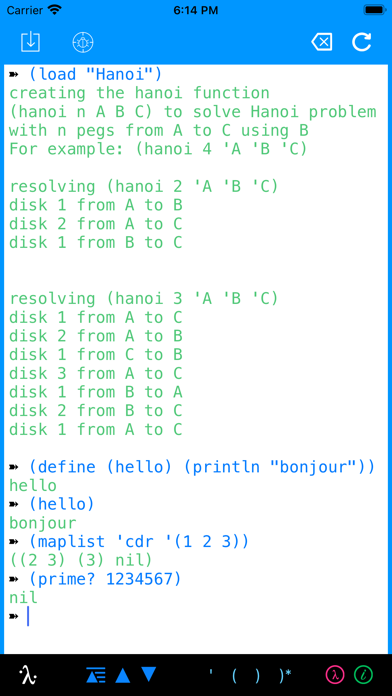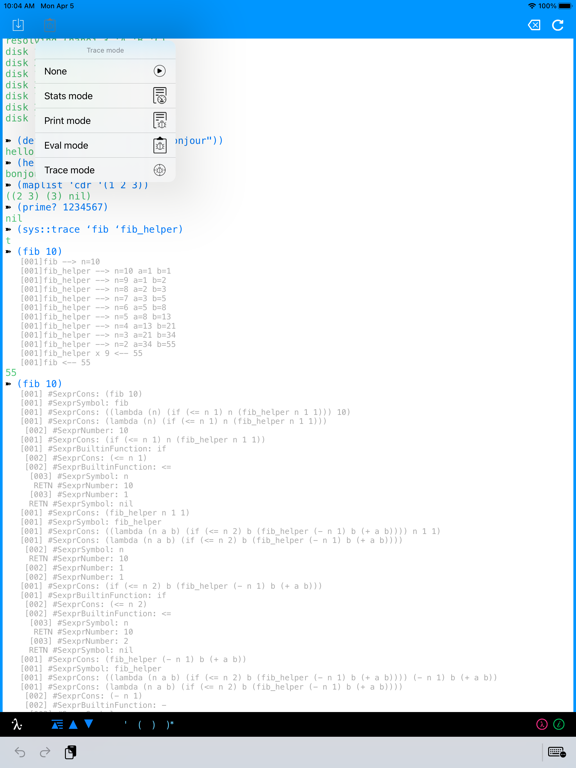14 votes - Developer Tools - First release: 2017-11-07T19:32:31Z
Screenshots
Description - 4+
My Lisp is a complete Lisp environment running directly on the iPhone, iPad, and Mac. This interpreter is true to the original John McCarthy Lisp implementation with the fundamental 7 operators quote, atom, eq, car, cdr, cons, cond, along with lambda and label. My Lisp also contains core and mathematical operators borrowed from other Lisp dialects (Le Lisp, Lisp 1.5, MacLisp, Common Lisp and Scheme to name a few) to make it easy to learn, program, and most importantly, enjoy Lisp. It also features built-in functions for advanced mathematics, including complex numbers and numerical analysis (roots and zeros finder, integral approximation). The complete description of the fundamental, core, and built-in functions is available using a set of library functions completely written in My Lisp. My Lisp offers an interpreter and an editor, all working on the iPhone and iPad, and most importantly, without requiring any server connection, that is, the interpreter is executing locally on the iPhone or iPad My Lisp is installed on. Library and example files contain the source code of classical functions and problems solved by My Lisp and may be used as reference to learn Lisp and develop other programs. They include classical puzzles (hanoi and n-queens), basic mathematical functions (gcd, lcm, factorial, fibonacci, prime?), and the historical apply, mapcar and maplist functions. The Lambda Calculus example file contains various functions related to Lambda Calculus and Combinators, with alpha-conversion, beta-reduction, de Bruijn notations, etc. As a special note, the example file Symbolic Derivation contains a complete yet extensible symbolic derivation module allowing to compute the formal derivation of virtually any symbolic function expressed as a Lisp expression. A user manual and a reference manual are available from within the application but also on My Lisp web site (https://lisp.lsrodier.net) and in Apple Books. The complete source code of the library and example files is part of My Lisp. Last but not least, this overview couldn’t end without a sample definition of the notorious REPL function: (define (REPL eval_me) (REPL (println (eval (read)))))


















